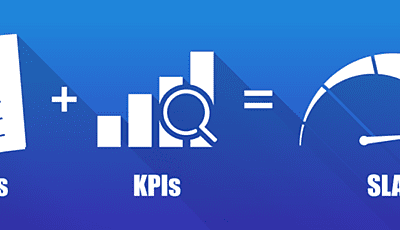Service reviews ensure that Managed Service Providers (MSPs) deliver consistent, satisfactory service and provide clients with Continual Service Improvement (CSI). By reviewing client engagements regularly, MSPs not only improve the quality of their services, but also strengthen their relationships with clients.
What is a Service Review?
A service review is an evaluation of the services provided by an MSP to a client designed to identify opportunities for CSI, boost efficiency and sustainability, and foster trust between MSPs and clients. During a service review, MSPs take clients through an analysis of data related to the goals of the client to determine current service effectiveness and identify strategies for CSI. The service delivery manager, a representative from the MSP, oversees and manages the services to the client. As such, the service delivery manager is responsible for establishing policies for consistent performance, monitoring employees, and evaluating customer feedback to develop CSI.
During service reviews, service delivery managers analyze the interaction between three key elements: Critical Success Factors (CSFs), Key Performance Indicators (KPIs), and Service Level Agreements (SLAs).
- CSFs are elements deemed necessary for an organization to achieve a goal and are therefore defining elements for the success of an enterprise.
- KPIs are quantifiable measurements of success gathered and analyzed by service providers and clients to assess how close an organization is to achieving its CSFs.
- SLAs are standards of service defined and agreed upon by providers and companies to hold the MSP accountable for the service they provide. MSPs and clients examine CSFs and KPIs to ensure SLAs are being met and to see how the provided services can be improved even more.
So, if a client has a CSF of improving their Help Desk’s capabilities, a KPI they might use would be the time to resolution for incident tickets, or the rate at which tickets are responded to, processed, and resolved. The SLA that the client and the service provider might agree upon would be the set amount of time it should take for a Tier 1 technician to respond.

How Does a Service Review Work?
Within the service review process, there are incremental levels of MSP-client engagement that help sustain CSI. From discretionary informal syncs to established quarterly business reviews, each level varies in frequency, scope, objectives, and attendees. However, every tier is a vital component of the overall structure of the service review process, and both parties should establish expectations for the service review to ensure a satisfactory outcome.
Informal Syncs
Although not a true service review, informal syncs are nevertheless a key component of the service delivery process. These daily, weekly, or biweekly conversational meetings provide an opportunity for MSP team leads to monitor the day-to-day service by gathering data, like ticket volume and customer satisfaction, that can be assessed to ensure CSI. In the example of the client seeking to improve their Tier 1 staff capabilities, informal syncs provide an opportunity for the service provider to track the response time for incident tickets. Because informal syncs are a courtesy to the client by the MSP, they go a long way in terms of customer service by sustaining frequent communication between both parties. Although their regularity isn’t as fixed as other levels of the service review process, informal syncs ultimately make the ensuing service review engagements more effective.
Monthly Service Reviews
The primary purpose of monthly service reviews is for MSPs to examine KPIs in relation to CSFs to assess how the overall performance of their service is aligning with the client’s goals. Monthly service reviews differ from informal syncs because they are strategic as well as tactical; they serve as the occasion for the MSP to use data analysis to create an operational plan that leads to tactical maneuvers, and are the opportunity for the evaluation of the service performance to continue. If the client seeking to improve its ticket resolution efficiency still has unsatisfactory resolution times—signaling that the CSF has not been achieved—the monthly service review becomes the opportunity for the MSP to develop and propose strategies that will put the client back on track to making the CSF a reality.
Quarterly Business Reviews (QBRs)
As their title indicates, Quarterly Business Reviews (QBRs) take place on a quarterly basis. During QBRs, MSPs unify the data gathered during the quarter and the strategic assessment performed during the service review. Using this more comprehensive analysis, MSPs work to revise the service delivery to align with the evolving needs of the client and identify other services to be potentially improved. As such, QBRs provide the opportunity for MSPs and clients to evaluate the effectiveness of their business relationship by comparing the current service performance to previous QBRs.
If the strategies developed during the monthly service review helped the example client’s Tier 1 technicians develop a method of streamlining their time to resolution, the client may want even more improvements made. Moreover, the client may want to translate the strategies developed onto another CSF, such as increasing the first-touch resolution rate for incident tickets. Thus, like the monthly service reviews, QBRs are strategic—they are the forum in which the MSP can make high-level strategic modifications to their delivered services.
Semi-Annual/Annual Business Reviews
Building off of QBRs, Service Delivery Executives (SDEs) and C-level executives on the client side meet for semi-annual or annual business reviews. During these yearly or twice-yearly meetings, executives from both parties forecast the long-term outlook for the service engagement and discuss the potential of contract renewal in light of an evaluation of the overall service value. Attendees also review if SLAs need adjustment, if CSFs have changed overtime, or if new KPI metrics should be introduced to help maintain or boost CSI. Moreover, these engagements are an opportunity for executives to identify potential new services to be delivered and to develop new strategies to align with business goals.
During a semi-annual or annual business review, the client looking to improve their Help Desk’s capabilities might want to introduce a KPI metric for the percent of tickets that escalate to Tier 2, or they might adapt their CSF from the Tier 1 Help Desk to Tier 2. Additionally, if the client has achieved business growth over the course of the year and evolves their IT strategy accordingly, SDEs would need to create a plan for translating their service delivery to align with those new strategies.
The Value of Service Reviews
In order to be a successful service provider, MSPs must proactively seek out opportunities for CSI by conducting regular service reviews throughout the year to ensure that their client’s needs are being met. As such, clients should seek out an MSP dedicated to providing clients with consistent CSI through frequent, effective service reviews. However, it is important to remember that aside from the benefits afforded to clients by consistent service reviews, these engagements also strengthen the professional relationship between clients and MSPs. For this reason, the shared understanding of business goals and a clear plan for achieving those goals is paramount to success at all levels of the service review process.




